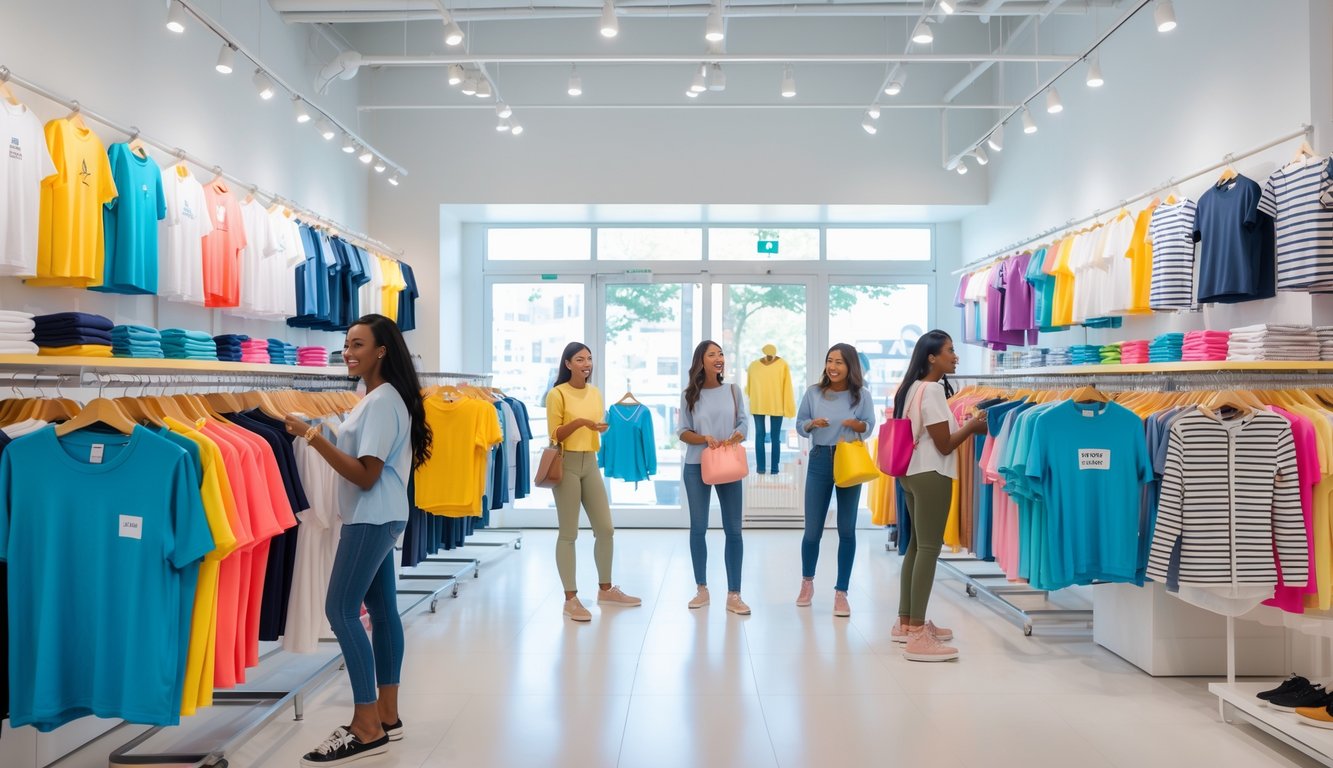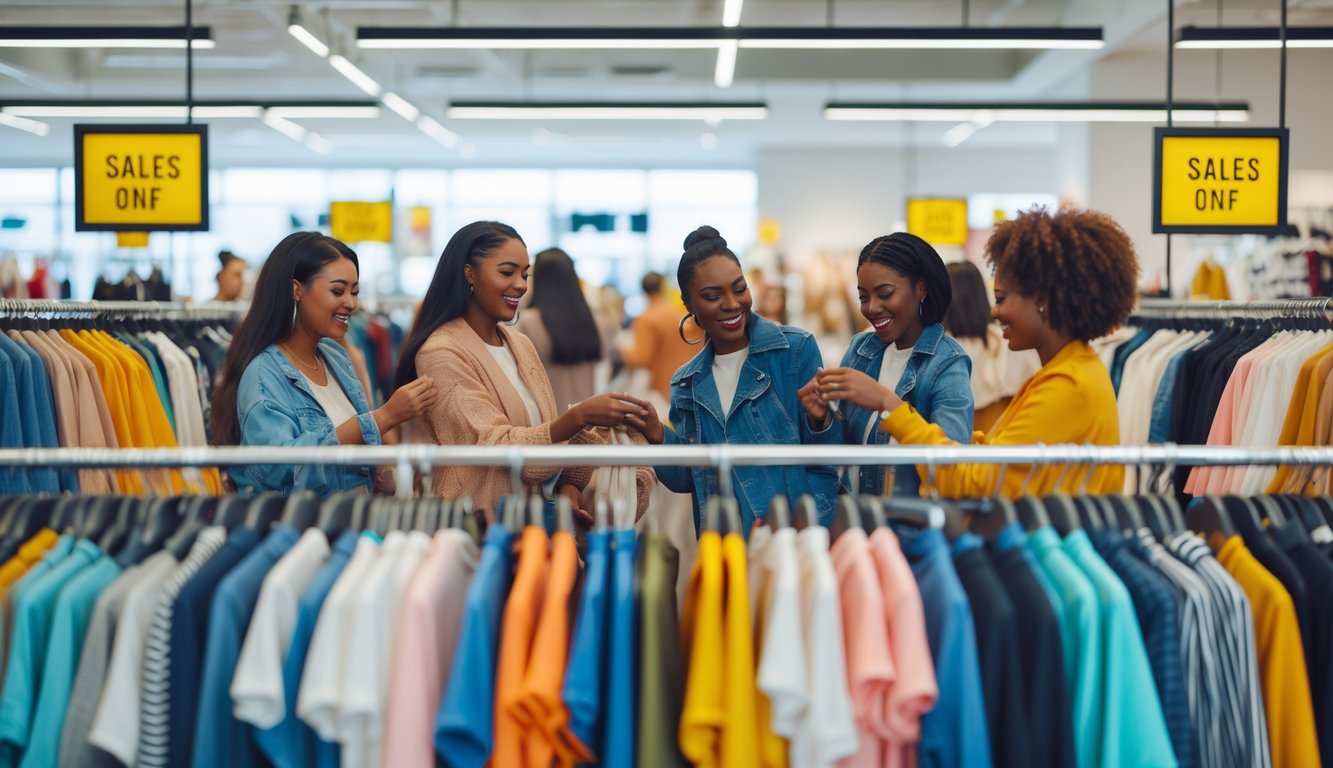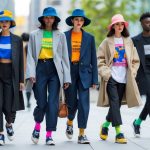
Key Pieces Leading the Sales Surge

Phone keeps buzzing—restock alerts on things that aren’t even runway-worthy: ballet flats everywhere, plaid skirts pushing aside “quiet luxury,” and yet another friend bought a trench coat after ditching big brands. Prices are moderate, patterns are all over the place, stats are even weirder—Vogue Business says basics brands saw a 46% sales jump. For basics. Not logos.
Ballet Flats and Their Widespread Appeal
Apparently, sneakers are out? I thought the “comfort era” would never end, but ballet flats are back in every feed (even though I swear they disappeared for a while—checked my old photos, it’s true). Me+Em, that “investment” brand, pulled in £120 million and flagged flats as a big seller. But don’t get fooled by “timeless”—these come padded, squared-off, super soft, and people (yeah, me too) are buying more than one color. No one talks about arch support, which is probably a mistake.
Style forums are a mess: “Only leather lasts, skip synthetics unless you love blisters.” Resale values? Not climbing. So it’s not about profit, it’s about not thinking too hard about your shoes (until it rains, then regret). Department buyers say even the most conservative malls can’t keep mesh ballets in stock. Some dermatologists warn about blisters with bare feet, but sales keep climbing. Logic? None.
Statement Trends: Plaid, Fringe, and Leopard Print
Patterns are out of control. Plaid and leopard are everywhere again. I caught myself staring at someone’s checkered coat for way too long. Fringe is on everything. Plaid isn’t just for kilts; it’s on mini dresses, blazers, you name it. Gen Z? They want novelty, not nostalgia.
Zara and Mango are launching limited plaid and animal prints at prices high enough to make you double-check. The best-selling fringe jacket at one chain was under $90, and the dupes are everywhere. Stylists—not just TikTokers—claim leopard’s back for work, not just parties, which feels wrong, but sales are sales.
Fringe detail swings with every trend—buyers told me, “Bolder is better, our returns dropped 8%.” No one trusts leopard print to last, not after 2017, but it keeps selling. My group chat hates admitting it looks good, but they’re not returning it.
Mini Dresses and Trench Coats in Everyday Wear
Saw two coworkers—one in design, one in tech—both wearing mini dresses under trench coats at coffee. Not high fashion, but they looked like they meant it. Post-pandemic, short dresses basically replaced jeans for a lot of people, which is wild, but “mini dress” searches are up 60% year-on-year, says some marketplace rep. Trench sales are even bigger.
The new trenches aren’t even beige—electric blue, bottle green, weirdly waterproof. It’s the belt, though. “Makes me look pulled together, even if I’m melting inside,” one project manager told me during a rainstorm. Fast-fashion “premium” lines brag about sustainability and better linings, but mini dresses and trenches on resale sites? Gone in an hour.
A stylist told me you could skip every “statement” item this year if you just have a black mini and an oversized trench. I keep trying that, but then another wild print crashes my feed and, well, the cycle starts over.
Influence of Streetwear and Street Style
Okay, so, I’m supposed to believe fashion houses still run the show? That’s hilarious. I swear, every time Supreme drops a logo tee, half the city’s teens show up in the same thing and my social feed just melts into a mess of collabs and “sold out” posts. Meanwhile, luxury labels? They’re just… there, lurking, trying to keep up. Feels like the street’s running the show and the old guard’s just tagging along, honestly.
Rise of Streetwear Brands
Stüssy, Supreme, Palace—how are these brands everywhere? I mean, the hype’s real, but it’s not just hype, right? Supreme’s weekly limited-edition drops make people set alarms, skip class, and, yeah, gamble with bots just for a shot at a hoodie. Who’s camping out overnight for a Hermès scarf? No one.
My cousin bought a Supreme hoodie just to flip it, not even to wear. Then the Louis Vuitton x Supreme collab happened in 2017 and, I swear, that was the moment streetwear just bulldozed into luxury for good. Apparently, 66% of Gen Z now call a streetwear brand their “dream label”—Business of Fashion threw that stat out last year and I’m still not over it. But, I mean, why do I keep seeing a $300 Supreme brick on someone’s desk? What’s the logic? Scarcity? Group identity? Or are we just all a little label-obsessed and too embarrassed to say it out loud?
How Street Style Is Shaping Consumer Choices
Here’s what actually bugs me: people trust what they see on the street, not in some glossy campaign or on a random celebrity. Walked by a thrift shop last week—packed with old Nike, Stüssy jackets, worn-out Fila sneakers. No fancy displays, just racks and people swapping stories about “the drop” or showing TikToks. Trends don’t trickle down from magazines anymore. They just explode out of nowhere, like, right around the corner.
If I’m being honest, the shoes I see on the subway are battered Jordans, chunky New Balance, Vans that have seen better days. Nobody’s flexing luxury loafers. Street style’s real power? It’s not about starting trends, it’s about solving actual problems—comfort, attitude, not looking like you tried too hard. My stylist friend says “nobody posts their true favorite fit, but you always spot it.” That’s so true. The stuff actually selling? Black cargos, oversized sweatshirts, dad hats. Look around in any coffee line, you’ll see it. Why pay for a logo when the attitude’s free?



